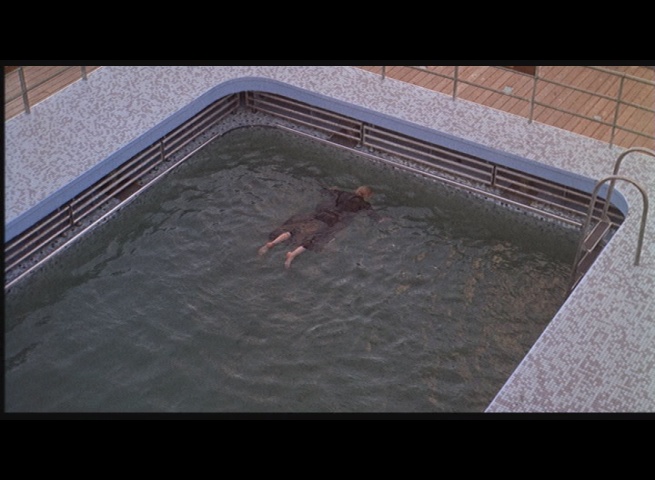- Yellow/Grey
- »Fakir?
- In Music, Truth
- Morality
Sex drives Marnie to water - but is it for suicide?
In such a tender reading as this, the scene hardly comes across as the rape as which it has been popularly interpreted in both the public eye and some pockets of academic film criticism.1 Marnie’s well-acted freeze could easily be read as implicit consent to the (itself implied) sex act, but just as easily as a straightforward sign of trauma which would incapacitate her.2 Similarly, her attempt at suicide the next day seems to indicate that she was revolted by the violation of her dignity. But, as Wood aptly points out, her pose in the ship’s pool is remarkably similar to another faked drowning from Hitchcock’s corpus – that of Madeline-cum-Carlotta in Vertigo.3 What’s more, in an oceanfaring vessel, there would appear to be far more obvious and effective means to drown oneself should one actually seek to suicide.

Marnie's faked-drowning pose cues Madeline's faked-drowning pose in Vertigo.
Wood further notes that Marnie’s retort – pithy and clever – hardly seems unplanned.4 Were the suicide to be faked, the implied sexual penetration may represent not a rape, but Marnie’s passive plea for rescue at the hands of Mark. Suddenly, her active resistance to Mark’s figure appears purely as a manifestation of her resistance to the stock sailors of her Mama’s house. Instead of a rape, Mark’s penetration is a penetration of her artificial shell – a move that she secretly welcomes.5